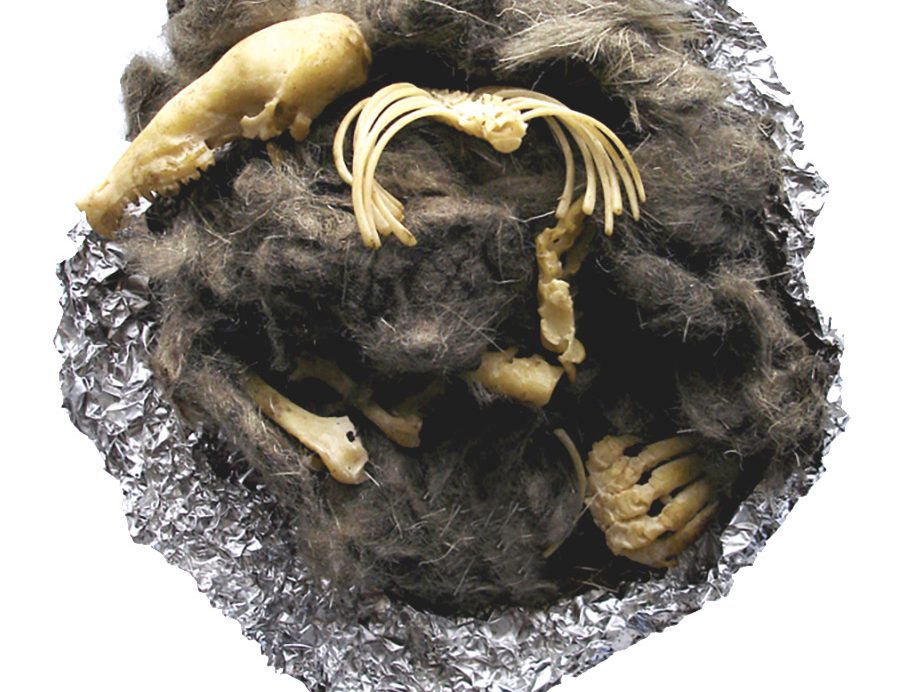What’s an Owl Pellet?
How can you tell what an owl ate for dinner? Study the bones that are left over! Just as you throw away your chicken bones, owls “throw away” the remains of their meals. Owls cough up pellets containing the bones and fur of their prey. Pellets often contain full skeletons of the prey that have been consumed. Owl pellets can be studied to learn about an owl’s diet, habitat and food chain. The most commonly dissected owl pellets are Barn Owl Pellets.
Barn Owls
The Barn Owl (tyto alba) is a fairly common species. They like to hunt in open field areas where lots of rodents make their homes. Barn owls feed early in the evening, and regurgitate a pellet with the fur and bones of their prey about 18-20 hours later. They are not very picky eaters, and swallow their prey nearly as whole as they can. When the owl eats, the flesh is dissolved in their stomachs, but the bones and fur are not digested. The pellets that are produced therefore can contain the full, skeletons of the owl’s prey. A barn owl will produce 1-2 pellets per day. The pellets contain an average of the remains of two to three organisms (rodents, voles, rats, small birds, etc.). Barn owls often roost in barns, church steeples, or caves, where they are most protected from the elements.
Owls are Important for Pest Control
Did you know that owls are one of nature’s best exterminators? They eliminate many rodents that eat plants being grown for agriculture. Without owls, there would be so many more rats, voles and gophers to destroy crops. That’s why many farms install owl boxes to encourage owls to live nearby and help reduce the rodent population.
Dissecting Pellets
Owl Pellet dissection is a safe, terrific activity conducted in thousands of classrooms each year. If you have never done a dissection of owl pellets previously, you will be surprised at how much your students will engage as they discover the contents of their owl pellet. Bone charts are readily available to help sort the bones that are discovered. The chart can also help identify the animal the owl ate. This video is a great resource if you’ve never done this before.
Kits, Materials & Tools for Dissection
Nature Watch offers Barn Owl Pellets in 2 different sizes as well as tweezers and wooden probes to assist in the dissection (magnifiers are helpful too). As a compare/contrast exercise it can be nice to see how a Barn Owl pellet compares to a Great Horned Owl Pellet. Whereas the Barn Owl contains full bones, the Great Horned digests the bones more fully. (The pellet ends up being chalkier.) While all Nature Watch pellets are completely sterilized, some educators opt for a synthetic (not real) substitute pellet. Natural pellets are best and you’ll see that instructors and students quickly get over any squeamishness once they get started. This is hands on learning at its best! Nature Watch offers so many great teaching tools focused on Owls and Owl Pellet Dissection.
Encourage The Next Generation of Scientists & Conservationists
Nature Watch helps children of all ages get in touch with their natural surroundings! With activities that foster a love of the outdoors and environmental sciences that can be initiated indoors and out, educators have trusted Nature Watch for over 30 years to provide the most engaging crafts and accessories to make learning fun.

